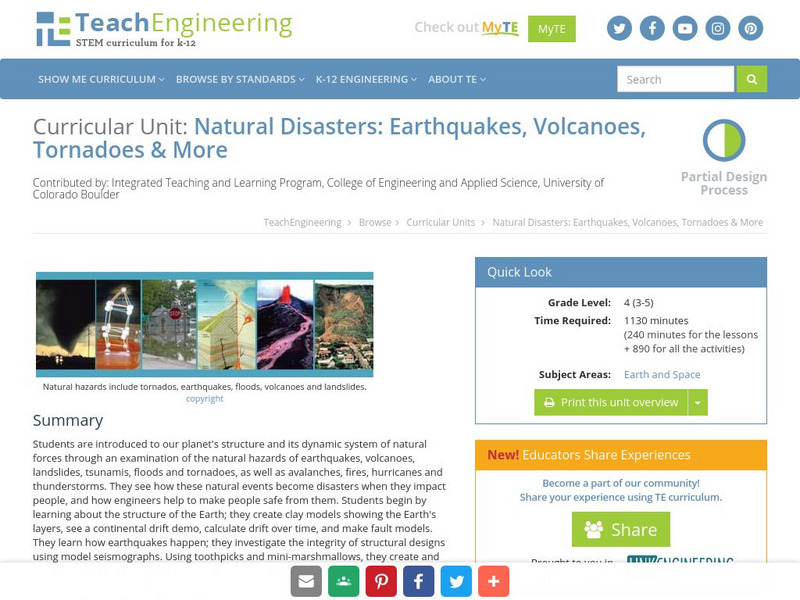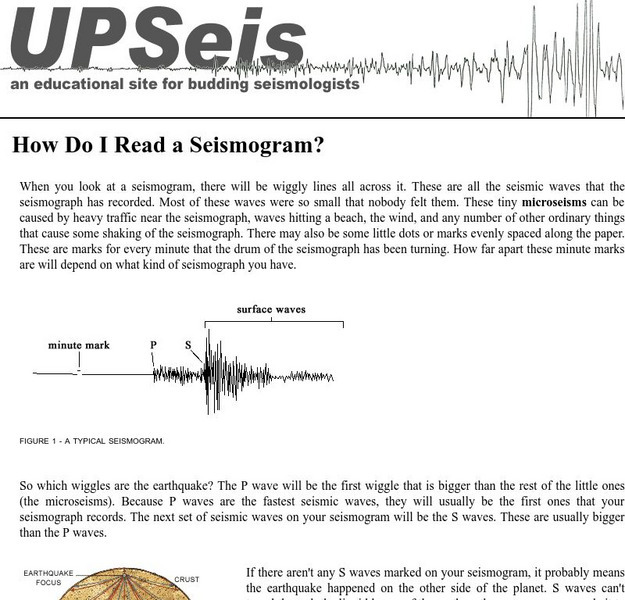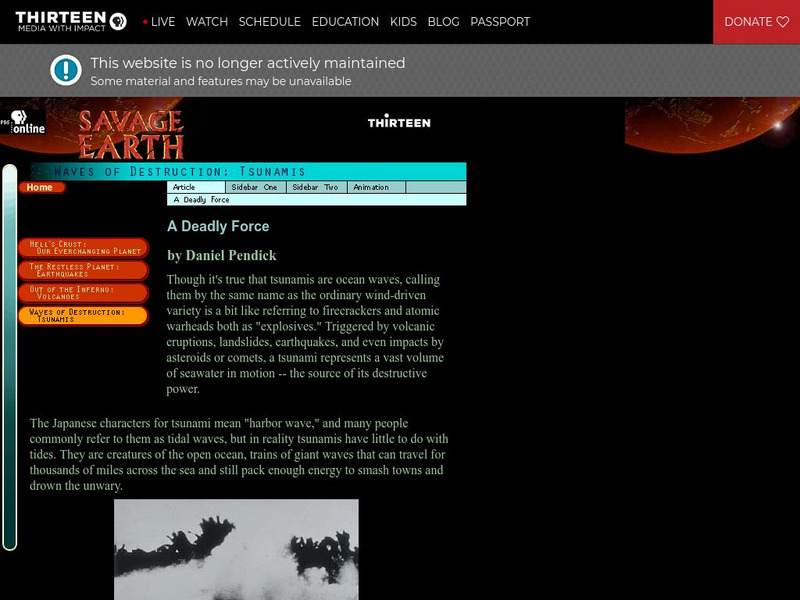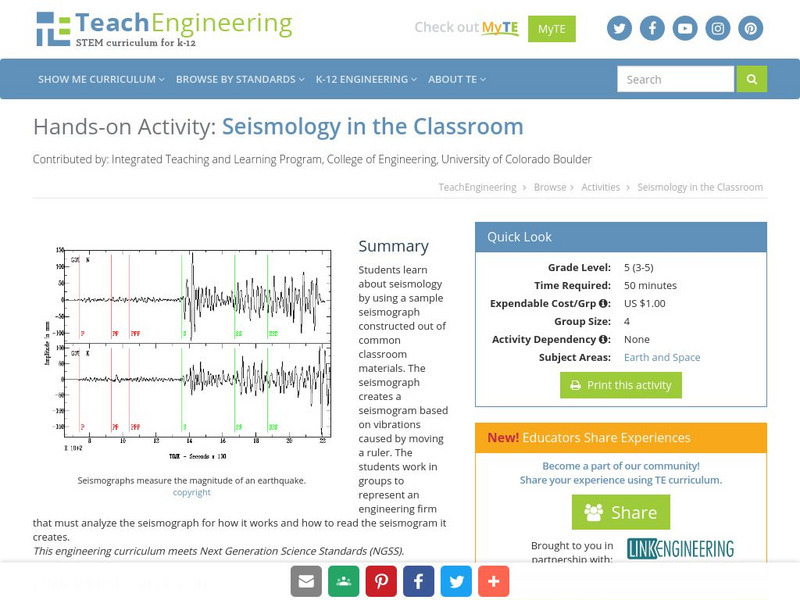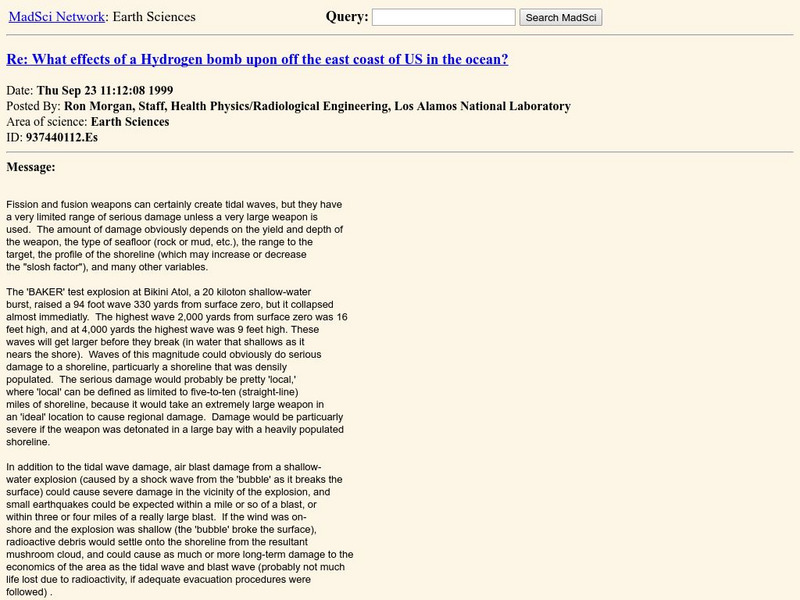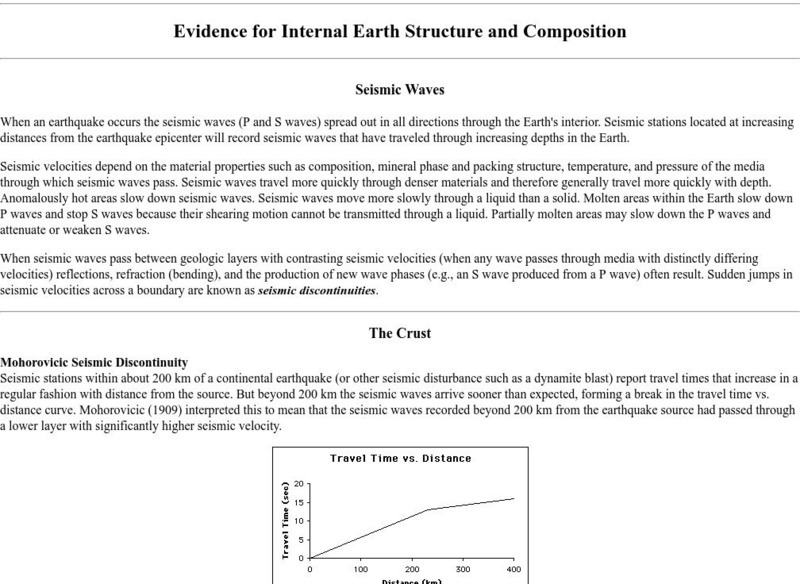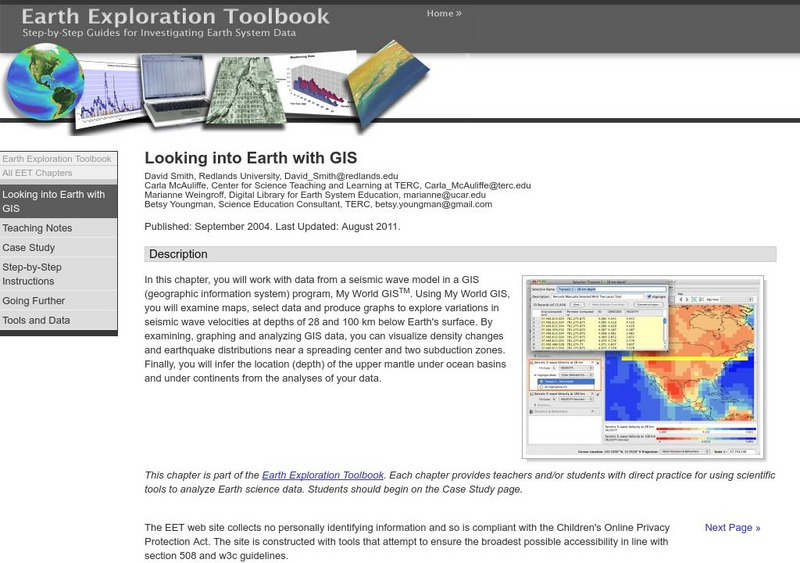Hi, what do you want to do?
Other
Tech Museum: Building for the Big One [Pdf]
This resource presents a project where students design and build structures that can withstand an earthquake. The project can include an extension where students look at the factors of soil type and proximity to fault in their design....
PBS
Nova: Seismic Signals
Scientists have determined that the earthquakes preceding volcanic eruptions are different than those that precede earthquakes. Discover the sounds and wave patterns produced by the three different types of volcanic seismic activities.
TeachEngineering
Teach Engineering: Natural Disasters
Students are introduced to our planet's structure and its dynamic system of natural forces through an examination of the natural hazards of earthquakes, volcanoes, landslides, tsunamis, floods and tornados, as well as avalanches, fires,...
Open Ed
Open Ed Sci: 6.5 Natural Hazards
This unit begins with students experiencing, through text and video, the 2011 Great Sendai or Tohoku earthquake and subsequent tsunami that caused major loss of life and property in Japan. Students will think about ways to detect...
Incorporated Research Institutions for Seismology
Iris: Exploring the Earth Using Seismology
The paths of some seismic waves and the ground motion that resulted are shown in this poster.
Michigan Technological University
How Do I Read a Seismogram?
When you look at a seismogram, there will be wiggly lines all across it. So which wiggles are the earthquake? This site answers this question.
PBS
Pbs Teachers: Science of Tsunamis: Seeking Understanding in the Wake of Tragedy
Conduct a demonstration to learn about how waves function in water. Create a poster that shows the physics of waves, how tsunamis work, the devastation caused by the 2004 tsunami or information about relief efforts for the 2004 tsunami.
PBS
Wnet: Thirteen: Savage Earth: Tsunamis
Excellent site exploring the mysterious and destructive tsunamis. Explore this scientific marvel and learn about the causes and dangers.
University of Southern California
University of Southern California:tsunami Research Group
This site provides a world map of locations of past tsunamis, some video/animations of tsunamis, and a list of additional links to related topics.
University of Washington
University of Washington: A Survey of Great Tsunamis
This resource opens up with a clickable map that will provide information on eight different tsunamis, such as the 1929 Grand Banks tsunami, the 1975 Hawaiian tsunami, and several others. Basic information and the damage caused by each...
TeachEngineering
Teach Engineering: Seismology in the Classroom
Students learn about seismology by using a sample seismograph constructed out of common classroom materials. The seismograph creates a seismogram based on vibrations caused by moving a ruler. The students work in groups to represent an...
MadSci Network
Msn: What Are the Effects of a Hydrogen Bomb?
From the Mad Scientist Network web site. Using a question and answer format, this page describes some potential effects of a nuclear explosion. The possibilities of tidal waves, earthquakes and radiation-related damages are discussed.
Indiana University
Indiana University Bloomington: Modeling Liquefaction [Pdf]
This activity allows students to observe a small-scale model of liquefaction, a hazard associated with strong-magnitude earthquakes. The sand, water, and ping pong ball(s) represent the composites of soil: sediment, water, and air,...
TeachEngineering
Teach Engineering: Tsunami Attack!
Students learn about tsunamis, discovering what causes them and what makes them so dangerous. They learn that engineers design detection and warning equipment, as well as structures that that can survive the strong wave forces. In a...
PBS
Pbs: Anatomy of a Tsunami
Scientists used maps and seismic data to produce a computer simulation that accurately shows the creation of the wave that shook the world. In this interactive, examine some of the models and images that reveal details of the tsunami...
Columbia University
Columbia University: Evidence for Internal Earth Structure and Composition
College-level research information describes how the movement of Earth's interior causes seismic wave activity.
Science Education Resource Center at Carleton College
Serc: Looking Into Earth With Gis
Multi-activity activity where young scholars will work with data from a seismic wave model in a GIS (geographic information system) program. They will examine maps, select data, and produce graphs to explore variations in seismic wave...
Incorporated Research Institutions for Seismology
Iris: Us Array Ground Motion Visualizations
The USArray Ground Motion Visualization (GMV) is a video-based IRIS DMS product that illustrates how seismic waves travel away from an earthquake location by depicting the normalized recorded wave amplitudes at each seismometer location...
Weather Wiz Kids
Weather Wiz Kids: Weather Safety
Click on the links to find guides to weather and natural disaster safety tips for earthquakes, floods, heat waves, hurricanes, lightning, mudslides, avalanches, thunderstorms, tornadoes, tsunamis, volcanoes, wildfires, and winter storms.
Science Struck
Science Struck: 19 Worst Natural Disasters in the History of Japan
Presents a list of the nineteen worst natural disasters to strike Japan, along with descriptions, year, number of casualties, and where each occurred. Japan has been hit by earthquakes, tsunamis, volcanic eruptions, typhoons, blizzards,...
National Institute of Educational Technologies and Teacher Training (Spain)
Ministerio De Educacion: Los Cambios en El Medio Natural Ii
In this unit you can learn about the deformation of rocks, magmatism, plutonism and seismic waves. It has 16 interactive activities.
US Geological Survey
U.s. Geological Survey: Life of a Tsunami
Animations illustrating long-lasting tsunami waves once they strike a coast.
Other
Abc News: Talking to Kids About the Tsunami Tragedy
How can you begin to talk to your kids about the Tsunami tragedy? This site offers insight on how to deal with this difficult topic.
Other
K 3 Learning Pages: Tsunami Disaster
This site features several links to tsunami relief sites. Students and teachers can access information about the tsunami relief efforts through these resources.





![Tech Museum: Building for the Big One [Pdf] Lesson Plan Tech Museum: Building for the Big One [Pdf] Lesson Plan](http://lessonplanet.com/content/resources/thumbnails/411264/large/bwluav9tywdpy2symdiwmduymc0xmdm2my0xd3vtenpxlmpwzw.jpg?1589993199)

